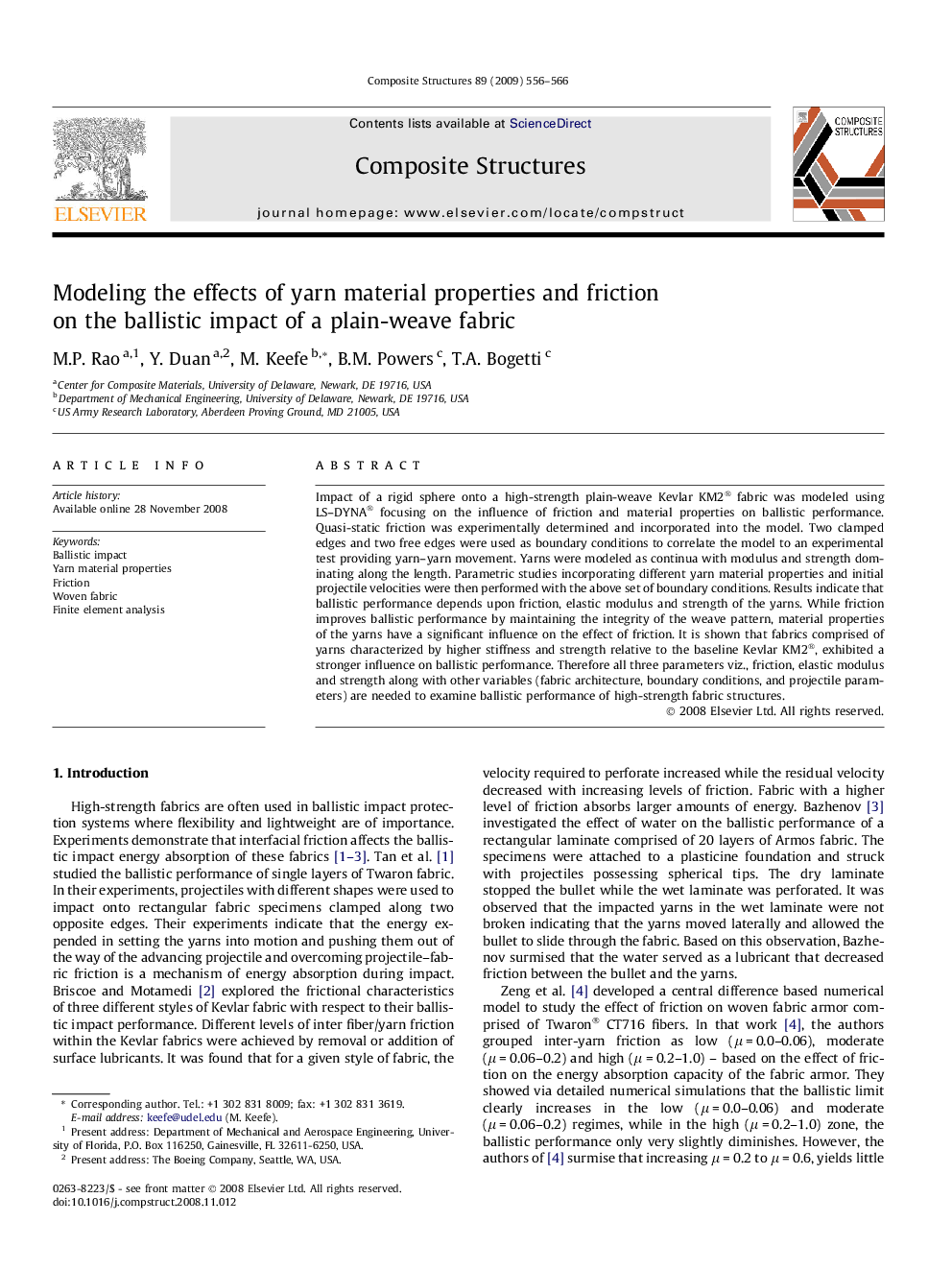| Article ID | Journal | Published Year | Pages | File Type |
|---|---|---|---|---|
| 253353 | Composite Structures | 2009 | 11 Pages |
Impact of a rigid sphere onto a high-strength plain-weave Kevlar KM2® fabric was modeled using LS–DYNA® focusing on the influence of friction and material properties on ballistic performance. Quasi-static friction was experimentally determined and incorporated into the model. Two clamped edges and two free edges were used as boundary conditions to correlate the model to an experimental test providing yarn–yarn movement. Yarns were modeled as continua with modulus and strength dominating along the length. Parametric studies incorporating different yarn material properties and initial projectile velocities were then performed with the above set of boundary conditions. Results indicate that ballistic performance depends upon friction, elastic modulus and strength of the yarns. While friction improves ballistic performance by maintaining the integrity of the weave pattern, material properties of the yarns have a significant influence on the effect of friction. It is shown that fabrics comprised of yarns characterized by higher stiffness and strength relative to the baseline Kevlar KM2®, exhibited a stronger influence on ballistic performance. Therefore all three parameters viz., friction, elastic modulus and strength along with other variables (fabric architecture, boundary conditions, and projectile parameters) are needed to examine ballistic performance of high-strength fabric structures.
